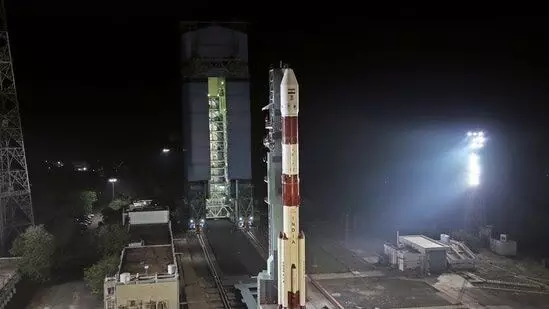
ISRO launches first satellite of the year
text_fieldsNew Delhi: The Indian Space Research Organisation (ISRO) has successfully launched a Polar Satellite Launch Vehicle (PSLV) with two smaller component satellites at 5:45 AM from Sriharikota in Andhra Pradesh, after a 25 hour countdown which was announced yesterday on Twitter.
The launch vehicle is designed to orbit an earth observation satellite EOS-04, weighing 1710 kg into a sun synchronous polar orbit of 529 km. This is the first launch of 2022.
ISRO Chairman S Somnath hailed the mission as one of the "biggest assets" of the country and said there would be more PSLV missions to come.
"Let me first congratulate the PSLV team on precise inject of EOS-04. The launch has rejuvenated Isro team once again," Satellite director Srikanth said.
EOS-04 is a Radar Imaging Satellite designed to provide high quality images under all weather conditions for applications such as agriculture, forestry and plantations, soil moisture and hydrology and flood mapping, according to Srikanth.
The two smaller co-passenger satellites include a student satellite (INSPIREsat-1) from Indian Institute of Space Science and Technology (IIST) in association with Laboratory of Atmospheric and Space Physics at University of Colorado, Boulder. It is also contributed by NTU, Singapore and NCU, Taiwan.
Two scientific payloads in this satellite is to improve the understanding of ionosphere dynamics and sun's coronal heating processes. All satellites were launched successfully into orbit from the Satish Dhawan Space Center in Andhra Pradesh.
The other is a technology demonstrator satellite (INS-2TD) from ISRO, which is a precursor to the India-Bhutan Joint Satellite (INS-2B). Having a thermal imaging camera as its payload, the satellite benefits the assessment of land surface temperature, water surface temperature of wetland or lakes, delineation of vegetation (crops and forest) and thermal inertia (day and night).
This will be the 54th flight of PSLV and 23rd mission using PSLV-XL configuration with 6 PSOM-XLs (strap-on motors). The launch comes nearly six months after the failed GSLV-F10/EOS-03 mission. According to Isro, the cryogenic upper stage ignition did not happen due to a technical anomaly during the GSLV-F10/EOS-03 launch on August 12, 2021.























